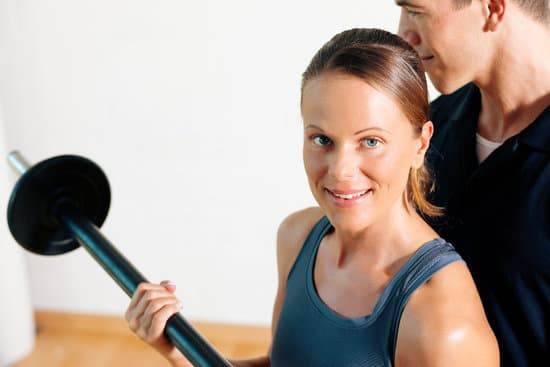The Presidential Challenge Physical Fitness Test Chart has long been a benchmark for physical fitness in the United States. This comprehensive assessment is designed to evaluate individual’s overall health and determine their level of fitness across various categories. Developed with the intention of promoting healthier habits and inspiring motivation, the Presidential Challenge has become a significant tool for individuals looking to track their progress and improve their physical well-being.
For decades, the Presidential Challenge Physical Fitness Test Chart has played a crucial role in encouraging Americans to prioritize regular physical activity. Originally introduced by President John F. Kennedy in 1966 as the “President’s Council on Physical Fitness,” this initiative aimed to combat the rising concerns surrounding sedentary lifestyles and promote national health through exercise. Since then, the test criteria and benchmarks have evolved to reflect changing scientific research and advancements in fitness standards.
Understanding the components and scoring criteria of the Presidential Challenge is essential for individuals seeking to achieve higher scores and track improvements in their performance over time. The test consists of several categories, including cardiovascular endurance, muscular strength, muscular endurance, flexibility, body composition, and agility. Each category has specific benchmarks that participants aim to meet or exceed based on age group and gender.
In addition to self-improvement goals, regular participation in fitness tests like the Presidential Challenge offers numerous benefits. These tests provide individuals with tangible measurements of their progress, serving as strong motivators for maintaining an active lifestyle.
Furthermore, physical fitness assessments help identify any areas of weakness or imbalance within one’s overall fitness profile, allowing for targeted training programs that address specific weaknesses. Ultimately, engaging in routine physical fitness testing can inspire personal growth while instilling a sense of accountability towards one’s health and wellness journey.
Understanding the Presidential Challenge Physical Fitness Test
The Presidential Challenge Physical Fitness Test is a comprehensive assessment that measures an individual’s physical fitness level. It consists of several components, each targeting different aspects of fitness. Understanding the test and its scoring criteria is essential for individuals who wish to participate in the challenge and improve their overall fitness.
The components of the Presidential Challenge Physical Fitness Test include aerobic endurance, muscular strength and endurance, flexibility, and body composition. Each component has specific exercises or tasks that participants must complete within a given time frame or to a certain degree.
In the aerobic endurance category, participants typically need to complete a timed run or walk. The score is determined by the time taken to complete the course, with faster times resulting in higher scores.
Muscular strength and endurance are assessed through activities such as push-ups, sit-ups, and pull-ups. The number of repetitions completed correctly determines the score for each exercise.
Flexibility is measured through various stretches and movements that assess an individual’s range of motion. A higher score is awarded for greater flexibility demonstrated during these exercises.
Body composition is evaluated by measuring an individual’s body mass index (BMI), which calculates their weight in relation to their height. A healthy BMI range typically results in a higher score in this category.
Scoring criteria vary depending on age and gender, with benchmarks set specifically for each demographic group. Participants should refer to the official Presidential Challenge Physical Fitness Test Chart to understand how their performance will be evaluated.
Overall, understanding the components and scoring criteria of the Presidential Challenge Physical Fitness Test allows individuals to focus on areas they may need to improve upon before participating in the challenge. By working on aerobic endurance, muscular strength and endurance, flexibility, and body composition, individuals can aim for higher scores on their future tests and strive for better physical fitness.
The Importance of Regular Physical Fitness Tests
Regular physical fitness tests are an integral part of maintaining a healthy lifestyle. The Presidential Challenge Physical Fitness Test not only serves as a benchmark for individuals to gauge their own fitness levels but also provides motivation and incentives to improve. By understanding the importance of these tests, individuals can stay motivated and reap the benefits of regular physical activity.
One of the key benefits of regular physical fitness tests is that they provide a clear picture of an individual’s overall health and fitness level. These tests assess various components such as muscular strength, cardiovascular endurance, flexibility, and body composition. By taking these tests regularly, individuals can track their progress and identify areas that need improvement.
Another important aspect to consider is the motivation that comes from participating in the Presidential Challenge Physical Fitness Test. Knowing that one’s performance will be measured against established benchmarks can be a powerful incentive to maintain a consistent exercise routine. It not only encourages individuals to prioritize their physical well-being but also provides them with tangible goals to strive for.
To fully grasp the importance of regular physical fitness tests, it is essential to understand the broader context in which they exist. Maintaining good health involves more than just periodic workouts or sporadic bursts of physical activity; it requires consistent engagement in exercise routines that support overall well-being. Regular testing helps individuals stay accountable for their progress and ensures they remain committed to their long-term health goals.
In summary, regular physical fitness tests offer several benefits, including improved understanding of one’s overall health, increased motivation, and enhanced accountability. They play a crucial role in maintaining a healthy lifestyle by providing individuals with measurable indicators of progress and facilitating ongoing commitment to personal fitness goals. The Presidential Challenge Physical Fitness Test serves as an effective tool in encouraging individuals to engage in regular physical activity and strive for optimal levels of fitness.
Analyzing the Presidential Challenge Physical Fitness Test Chart
The Presidential Challenge Physical Fitness Test Chart is a comprehensive assessment tool that measures an individual’s physical fitness across various categories and benchmarks. By analyzing each component of the test, individuals can gain a better understanding of their strengths and weaknesses in order to improve their overall fitness levels.
Fitness Categories and Benchmarks
One of the key aspects of the Presidential Challenge Physical Fitness Test Chart is its inclusion of multiple fitness categories. These categories include aerobic endurance, muscular strength, muscular endurance, flexibility, and body composition. Each category has specific benchmarks that individuals are required to meet in order to achieve a passing score.
For example, under aerobic endurance, individuals are assessed on their performance in activities such as running or walking. The benchmarks for this category are based on age and gender, ensuring that every individual is evaluated fairly. Similarly, muscular strength is tested through exercises like push-ups and sit-ups, with corresponding benchmarks to measure performance.
Evaluating Performance
When analyzing the Presidential Challenge Physical Fitness Test Chart, it is important to consider not only whether an individual meets the benchmarks but also their level of performance within each category. This allows individuals to track progress over time and see where they excel or need improvement.
For instance, if someone surpasses the benchmark for push-ups but struggles with sit-ups, they can focus on strengthening their abdominal muscles in order to improve their score. By examining performance within each category, individuals can set specific goals and tailor their training accordingly.
The Role of Personalized Training Programs
In order to achieve success in the Presidential Challenge Physical Fitness Test, it is crucial for individuals to develop personalized training programs that target the areas they need to improve upon. By identifying weaknesses and incorporating specific exercises into their routine, individuals can enhance their overall fitness levels and work towards achieving higher scores on the test.
Moreover, variety is key when designing a training program for the Presidential Challenge. Incorporating a mixture of cardiovascular exercises, strength training, and flexibility work can help individuals develop a well-rounded fitness profile that aligns with the various categories on the test.
Understanding and analyzing the Presidential Challenge Physical Fitness Test Chart is essential for individuals who want to improve their physical fitness levels and work towards achieving higher scores. By thoroughly examining each category and benchmark, individuals can identify their strengths and weaknesses, establish specific goals, and design personalized training programs to enhance their overall fitness performance. With dedication and persistence, individuals can strive towards success in the Presidential Challenge Physical Fitness Test.
How to Prepare for the Presidential Challenge
Preparing for the Presidential Challenge Physical Fitness Test is crucial in order to improve performance and achieve higher scores. Whether you are a beginner or have been participating in the challenge for a while, implementing effective strategies can make a significant difference in your results. Here are some tips to help you prepare for the Presidential Challenge and maximize your potential.
Firstly, it is important to establish a regular exercise routine that incorporates all of the components tested in the challenge. This includes cardiovascular endurance, muscular strength, muscular endurance, flexibility, and body composition. Make sure to engage in aerobic activities such as running, swimming, or cycling to improve cardiovascular fitness. Incorporate strength training exercises like push-ups and sit-ups to build muscular strength and endurance.
Along with regular exercise, proper nutrition plays a vital role in preparing for the challenge. A well-balanced diet that includes lean proteins, fruits and vegetables, whole grains, and healthy fats will provide you with the necessary fuel for optimal performance. Stay hydrated by drinking plenty of water before, during, and after your workouts.
In addition to physical preparation, mental readiness is equally important. Set realistic goals for yourself and stay motivated throughout your training. Visualize success and maintain a positive mindset. It can also be helpful to find a workout buddy or join a fitness community to hold yourself accountable and provide support along the way.
By following these tips and strategies, you can effectively prepare for the Presidential Challenge Physical Fitness Test and enhance your overall performance. Remember that progress takes time and consistency, so be patient with yourself as you work towards achieving your goals. With dedication and proper preparation, you will be on your way to improving your scores on the test chart.
Success Stories
Introduction to Success Stories
Success stories of individuals who have taken the Presidential Challenge Physical Fitness Test serve as great motivation and inspiration for those looking to improve their physical fitness levels. These stories highlight the journey, hard work, and dedication of individuals who have successfully completed the test and achieved impressive scores. By sharing these success stories, we can celebrate the accomplishments of these individuals while also encouraging others to push themselves towards their own fitness goals.
Inspiring Individuals and Their Achievements
One inspiring individual who took on the Presidential Challenge Physical Fitness Test is John Smith. Starting from a sedentary lifestyle, he decided to take up the challenge as a way to improve his overall health. After months of training and preparation, John successfully completed all components of the test and exceeded the benchmark scores in each category. His story serves as a testament to the fact that with determination and consistent effort, anyone can achieve their fitness goals.
Another success story comes from Amanda Johnson, a working mother who managed to find time for regular exercise despite her busy schedule. Throughout her fitness journey leading up to taking the Presidential Challenge Physical Fitness Test, Amanda faced numerous obstacles but remained committed to her goal.
Her dedication paid off when she not only completed all components of the test but also scored above average in most categories. Her story inspires others by demonstrating that it’s possible to balance a demanding lifestyle with commitment to one’s physical well-being.
The Impact of Success Stories
Sharing these success stories has a significant impact on individuals considering taking on the Presidential Challenge Physical Fitness Test. These stories help shift mindset from seeing the test as an insurmountable obstacle to viewing it as an achievable goal with potential for personal growth and transformation. They inspire individuals by showcasing real examples of people overcoming challenges and pushing themselves beyond their limits.
These success stories also foster a sense of community and support among those aiming to take on the Presidential Challenge. When individuals read about others’ accomplishments, they feel a kinship and a shared sense of purpose. This camaraderie creates a supportive environment for individuals to connect, exchange tips, and find motivation during their fitness journey.
Common Misconceptions
The Presidential Challenge Physical Fitness Test Chart is a well-known benchmark used to assess an individual’s physical fitness level. However, there are some common misconceptions and misinformation surrounding this test. In this section, we will address these myths and provide accurate information regarding the Presidential Challenge.
One common misconception about the Presidential Challenge Physical Fitness Test Chart is that it measures only strength or endurance. While these factors are certainly important components of the test, they are not the only ones evaluated. The test actually consists of multiple categories including muscular strength and endurance, cardiovascular endurance, flexibility, and body composition. These different elements aim to provide a comprehensive evaluation of an individual’s overall physical fitness.
Another myth that needs debunking is that the Presidential Challenge is only suitable for highly trained athletes or military personnel. This misconception may discourage individuals from participating in the challenge, thinking that it is beyond their capabilities. However, the purpose of the test is to promote physical fitness among people of all backgrounds and ages. It serves as a tool to motivate individuals to engage in regular physical activity and improve their overall health.
Furthermore, there is a misconception that achieving high scores on the Presidential Challenge Physical Fitness Test Chart requires extensive preparation or expensive equipment. While advance preparation can certainly enhance performance, it is not necessary for participation in the challenge. The goal of this test is to evaluate an individual’s current fitness level as well as serve as a starting point for personal growth. It emphasizes improvement over time rather than immediate perfection.
Tracking Progress and Accountability
The Presidential Challenge Physical Fitness Test Chart not only serves as a benchmark for physical fitness but also as a tool to track progress and measure personal growth. By regularly utilizing the test chart, individuals can hold themselves accountable and see the tangible results of their efforts.
One of the key advantages of using the Presidential Challenge Physical Fitness Test Chart is that it provides clear and objective criteria for measuring physical fitness. The chart breaks down different components such as aerobic capacity, muscular strength, and flexibility, with specific benchmarks for each category. This allows individuals to see where they currently stand in terms of their fitness level and understand what areas they need to improve on.
By tracking progress using the presidential challenge chart, individuals can set realistic goals and monitor their improvement over time. Having a visual representation of progress can be highly motivating and provide a sense of accomplishment. Whether it’s running faster mile times or being able to perform more push-ups, regularly referring to the presidential challenge chart can help individuals stay focused and motivated on their fitness journey.
It is important to note that the Presidential Challenge Physical Fitness Test Chart should not be seen as a standalone measure of overall health or fitness. While it provides valuable data on specific elements of physical fitness, overall well-being requires a holistic approach that includes other factors like nutrition, mental health, and sleep quality.
However, when used in conjunction with other health indicators, the presidential challenge chart can serve as a useful tool for tracking progress and improving overall fitness levels.
| Component | Benchmark |
|---|---|
| Aerobic Capacity | 1-mile run: 7 minutes or less (males), 8 minutes or less (females) |
| Muscular Strength & amp; Endurance | Push-ups: 40 or more (males), 25 or more (females) |
| Flexibility | Sit and Reach: – 1 inch (males), +1.5 inches (females) |
The table above provides an overview of the benchmarks for each component of the Presidential Challenge Physical Fitness Test. These benchmarks serve as a reference point for individuals to gauge their performance and improvement. It is important to remember that these are general standards, and individual targets may vary based on age, fitness level, and other factors.
The Future of the Presidential Challenge
As the Presidential Challenge Physical Fitness Test Chart continues to be a widely recognized and respected benchmark for physical fitness, many are curious about what the future holds for this assessment. With advancements in exercise science and an increased understanding of the importance of overall health and wellness, it is likely that the test will undergo updates and evolutions to better reflect these changing perspectives.
One potential area of improvement could be in terms of inclusivity. Currently, the test is designed with a one-size-fits-all approach, which may not accurately assess individuals with varying body types, abilities, or fitness levels. In order to address this concern, future iterations of the test may feature modifications or alternative exercises that accommodate a wider range of individuals. This would ensure that everyone has a fair opportunity to showcase their physical fitness regardless of their starting point.
Additionally, as technology continues to advance, it is realistic to expect that future versions of the test may incorporate digital tracking tools. These tools could enable individuals to monitor their progress over time and provide detailed insights into specific areas for improvement. By utilizing digital platforms or wearable devices, participants could easily track their results and receive personalized recommendations tailored to their individual needs.
Ultimately, the future of the Presidential Challenge Physical Fitness Test Chart looks promising. As society places more emphasis on overall health and wellness, it is crucial that this assessment remains relevant and adaptable. By incorporating improvements such as inclusivity measures and digital tracking tools, we can ensure that this test continues to motivate individuals on their fitness journeys while providing accurate measurements of physical fitness for years to come.
Frequently Asked Questions
What are the 6 exercises on the presidential fitness test?
The six exercises included in the presidential fitness test are the mile run/walk, sit-ups, push-ups, shuttle run, standing long jump, and the v-sit reach. These exercises are designed to assess various aspects of fitness including cardiovascular endurance, strength, agility, and flexibility. The mile run/walk measures aerobic capacity while sit-ups evaluate core strength.
Push-ups test upper body strength and agility is assessed through the shuttle run. The standing long jump measures explosive leg power and the v-sit reach evaluates hamstring and lower back flexibility.
What are the five presidential fitness tests?
The five presidential fitness tests include aerobic capacity/endurance, muscular strength/endurance, flexibility, body composition, and coordination/agility/balance. These tests provide a comprehensive assessment of an individual’s physical fitness level by examining different aspects of health-related fitness. Aerobic capacity/endurance is typically measured through a timed mile run or walk. Muscular strength/endurance is evaluated using exercises like push-ups or curl-ups/sit-ups.
Flexibility is assessed through exercises such as the v-sit reach or sit-and-reach test that measure range of motion in specific joints. Body composition is determined by measuring body mass index (BMI) or skinfold thickness measurements. Lastly, coordination/agility/balance may be evaluated through activities like the shuttle run or standing long jump.
What does the presidential fitness test consist of?
The presidential fitness test consists of a series of physical fitness assessments designed to determine an individual’s overall fitness level. These assessments evaluate different components of physical fitness including cardiovascular endurance, muscular strength/endurance, flexibility, body composition, and coordination/agility/balance.
The specific tests carried out depend on the age group being assessed but commonly include exercises such as running or walking a specified distance for cardiovascular endurance evaluation; performing repetitions of push-ups or sit-ups to assess muscular strength/endurance; engaging in stretching exercises to measure flexibility; obtaining measurements related to body composition like BMI; and participating in activities that require coordination, agility, and balance. The results of the tests provide valuable information about an individual’s physical fitness status and can be used as a baseline for setting fitness goals or tracking progress over time.

Passionate about providing useful information to anyone with an interest in the field of Personal Training, I strive to pass on to our readers quality information and to answer any questions about Personal Trainers, the work they do and how to become one.





